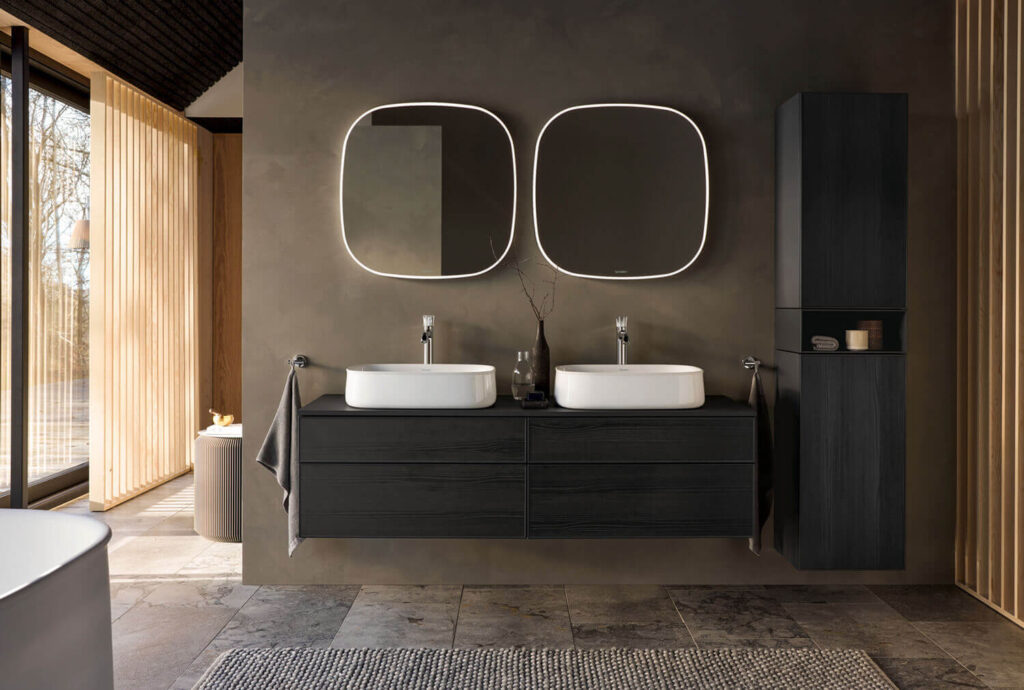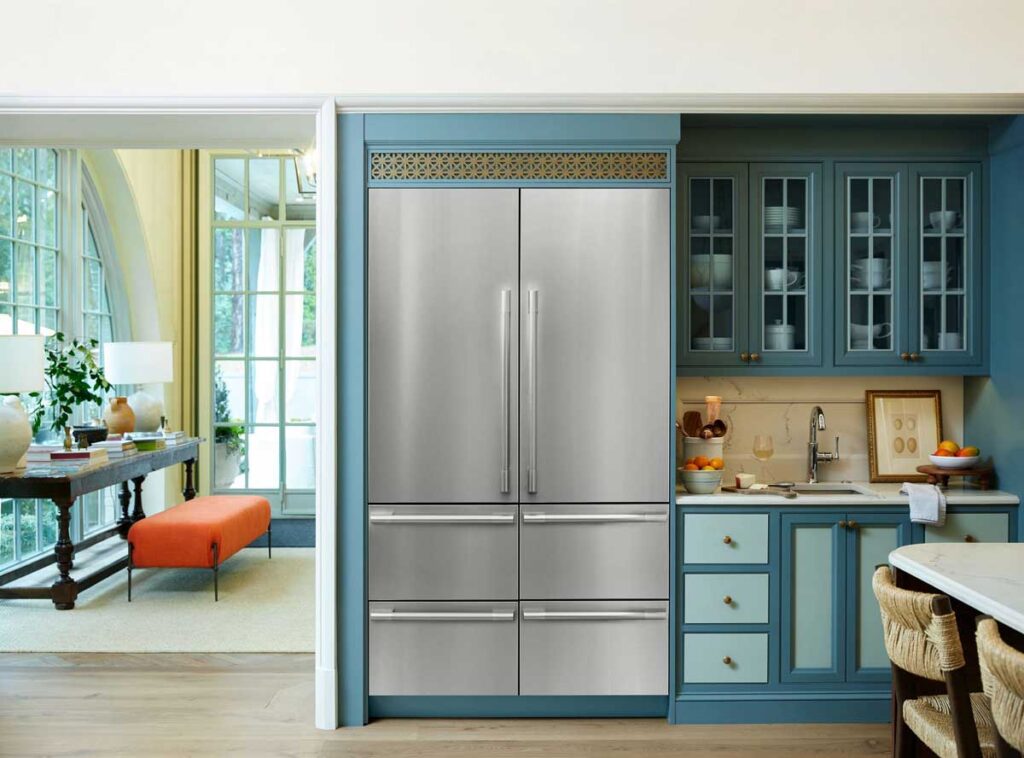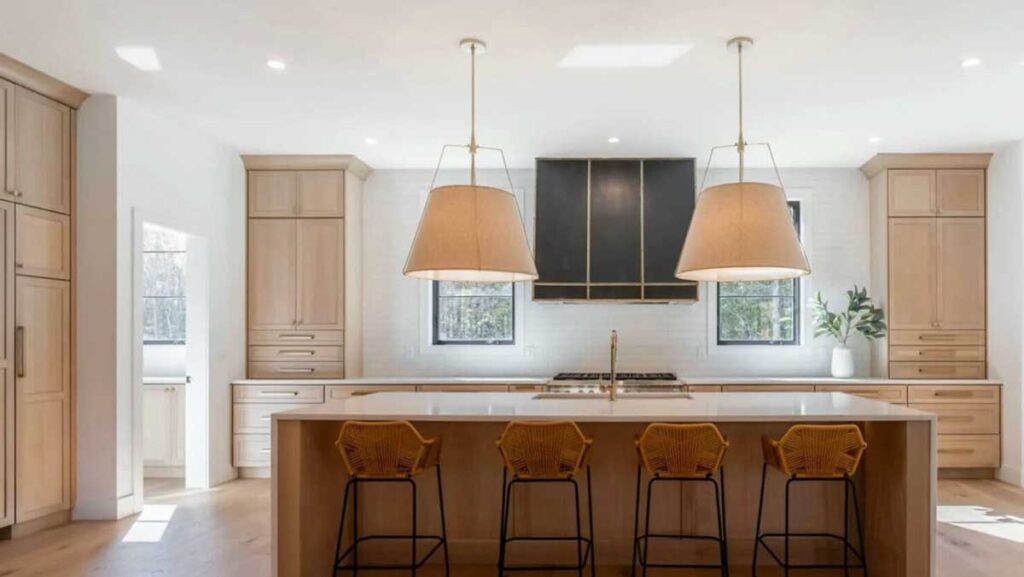Let’s take a nostalgic look at these blasts from the past that are back in style.
By Nicholas Tamarin
Recent trends are reflecting a growing appreciation for blending the old with the new, as homeowners seek to create spaces that are both functional and personal. These retro elements were designed with inspiration from past decades, typically between the 1940’s and 1970’s, and combine nostalgia with modern technology. Blending these throwback aesthetics with contemporary functionality has resulted in retro styles making a strong return in interior design, particularly for those looking to create a unique, eclectic, or vintage-inspired space. Here are the top five trends making killer comebacks in kitchen and bath design:
1. Retro Appliances and Fixtures

Vintage-inspired appliances and fixtures are making their presence known again in a big way. Think pastel-colored refrigerators, bold brass faucets, and mid-century light fixtures. Appliances and fixtures from the 1950’s and 1960’s often also feature smooth, rounded edges and shiny chrome detailing, giving them a distinct appearance. Instead of touch screens and digital displays though, many retro-style appliances feature large, tactile knobs and dials, adding to the old-fashioned charm.
Retro appliances and fixtures are a great way to add character and a timeless sense of style to your home, while still benefiting from the convenience and performance of contemporary technology. Vintage-style pendant lights, sconces, and chandeliers featuring materials like brass, copper, or frosted glass, as well as Edison bulbs, are popular choices for retro-themed spaces. Fixtures that feature mid-century style cross handles, gooseneck spouts, and polished finishes like chrome and brass evoke the look of old-fashioned kitchens or baths. Pedestal sinks, clawfoot tubs, and vintage-style tiles can also all contribute to a retro bath aesthetic.
2. Terrazzo Surfaces

Terrazzo is seeing a strong resurgence in both kitchen and bath designs. Its unique, speckled appearance brings a playful yet sophisticated touch to counters, backsplashes, walls, and flooring. Terrazzo surfaces are made by embedding small pieces of marble, quartz, granite, glass, or other aggregates into a cement or epoxy binder. Once set, the surface is polished to a smooth, glossy finish, creating a highly durable and visually striking surface–no two are exactly alike.
Terrazzo is also highly resistant to wear, scratches, and stains, making it ideal for high-traffic areas like kitchens and baths. And many terrazzo products are made using recycled materials, making it a sustainable choice for environmentally conscious homeowners and builders. They are easy to clean and require little upkeep beyond regular sealing and polishing.
3. Colorful Cabinets

Bold cabinets are back in style, moving away from the all-white kitchen trend. Deep blues, forest greens, and even soft pastels are being used to create a statement, adding warmth and personality to the kitchen. Bright and bold colors tend to create a focal point, while softer shades can provide a calm and fresh look. Glossy finishes add shine and reflect light, making the colors appear even more vibrant, while matte finishes offer a more understated and modern appeal.
When using colorful cabinets, designers often contrast them with neutral countertops, backsplashes, or hardware (such as brass, chrome, or black) to create balance and visual interest while avoiding overwhelming the space. Or try using color on lower cabinets while keeping the upper cabinets a neutral shade, or vice versa. Also remember that colors can look different depending on the natural and artificial lighting in a room, so it’s important to test paint swatches in the space before committing to a color.
4. Natural Wood Elements

Natural wood finishes, especially in lighter tones, are increasingly prevalent in both kitchens and bath design. These materials bring a warm, organic feel to the space, contrasting nicely with contemporary design elements. Whether used for flooring, furniture, cabinetry, or decor, wood adds a sense of craftsmanship. From rustic to modern, natural wood elements blend seamlessly into various design styles, providing both functional and aesthetic benefits for those looking to connect their interior spaces with nature. Wood is also a renewable resource, and using reclaimed or sustainably sourced wood is an environmentally friendly choice that aligns with eco-conscious design trends.
Natural wood grain patterns add texture and depth and can be left raw for a rustic look, stained to enhance its color, or finished with varnish or oils for durability and shine. Don’t be afraid to mix light and dark wood tones in the same space. Doing so can add visual interest and prevent the space from feeling too uniform. To keep the space from feeling too wood-heavy, utilize other materials like stone, metal, or glass. And keep the grain visible in furniture or flooring by using clear varnishes or light stains–the natural beauty of wood grain is a key aspect of its charm.
5. Mixed Metals

Mixing different metal finishes in hardware, lighting, and fixtures is once again au courant. Combining brass, chrome, and matte black can create a layered, eclectic look that adds depth and interest to the design. By carefully balancing finishes and tones, you can achieve a harmony that feels intentional and visually dynamic. Mixed metals can include shiny, polished finishes (like chrome or brass), matte finishes (like brushed nickel), and oxidized or antique metals (like aged bronze or blackened iron).
A successful mixed metals scheme usually features a dominant metal, with one or two complementary metals to accent and balance the look. Choose one metal to be the primary tone in the space, often used in larger elements like light fixtures, cabinet hardware, or faucets. This ensures consistency and creates a visual anchor for the room. Use one or two other metal finishes as accents. If you’ve chosen brushed nickel as your dominant metal, you could introduce brass or matte black as secondary accents in smaller elements like drawer pulls, picture frames, or table legs. Pair warm metals (like brass or copper) with cool metals (like chrome or stainless steel) to create further balance. A brass chandelier can work beautifully with chrome faucets or silver cabinet hardware. Stick to metals with similar finishes (e.g., all polished, or all matte). Mixing too many different sheens can make a space feel chaotic. And use materials like wood, marble, or glass to create transitions between the metals and soften the look. Metals reflect light differently, so the lighting in a room can impact how the finishes appear. Brighter rooms can highlight shinier finishes, while darker rooms may benefit from matte or brushed finishes.






















